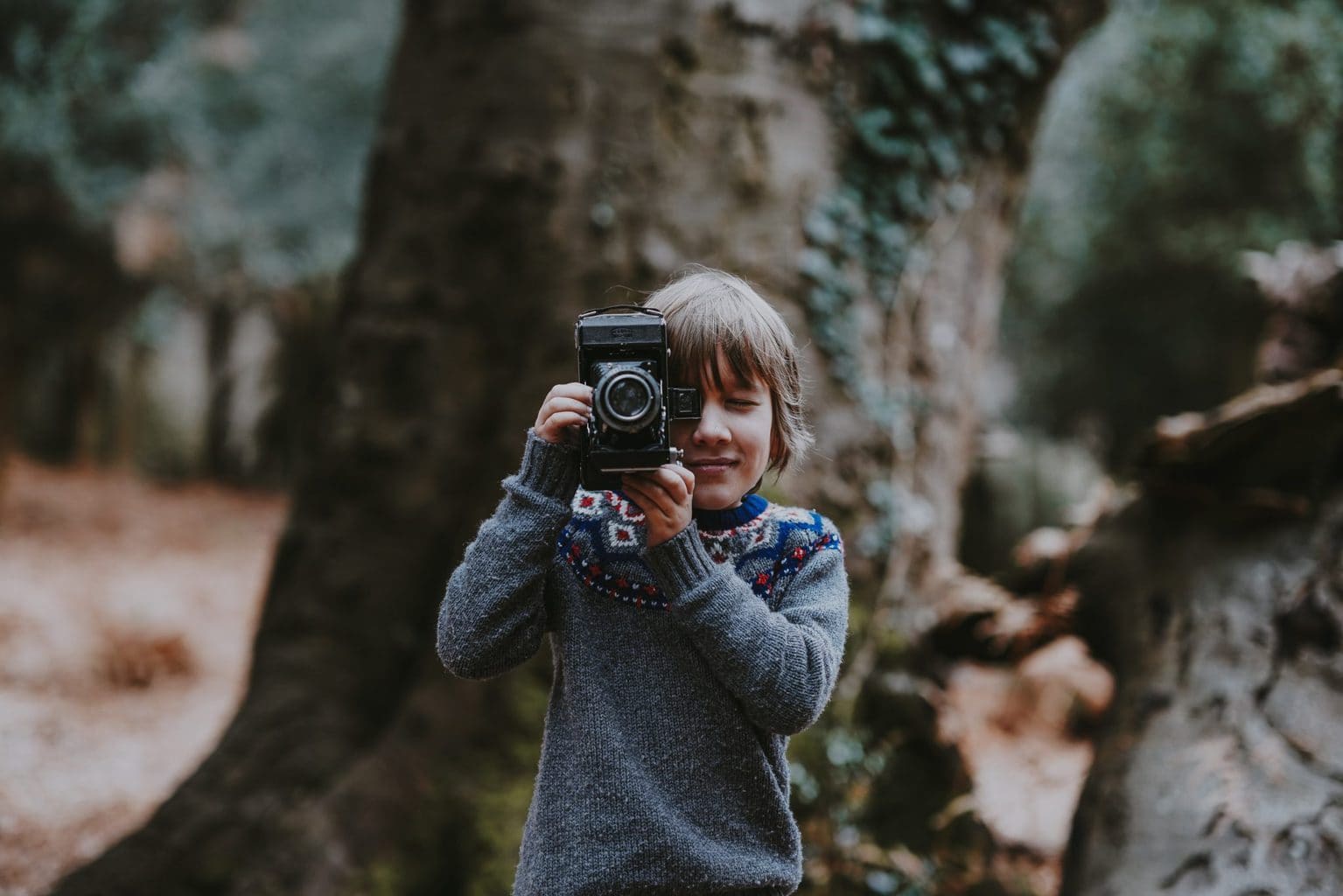Children's photography is one of the photographic genres most practiced by parents and professionals. It is also the entrance for many people to the world of photography. Who has not tried immortalizing the moments of their children and has decided to stay forever in photography?
Despite being one of the most gratifying, since there is nothing like the sincere look or the authentic gesture of a child, it is one of those that seems easy but, when it comes down to it, is not so easy. Therefore, whatever your situation, if you are interested in children's photography, as a parent, as a grandmother or as a professional, stay, because today I have reserved it to collect all the information regarding this genre. I intend to create a mega guide, the most complete you can find on the net, with tips, tricks, resources, inspiration, ideas and tools. All this so you can take incredible photos of children.
I am going to focus on children in general, from 2-3 years old, however, if you are looking for specific information on earlier ages, in this article you will find a guide to delve into baby photography.
You already know that all reading is good, taking notes, expanding knowledge, etc. This is phenomenal but…. as long as you practice what you read. Seriously, I'm not worth spending hours writing this mega guide with all the enthusiasm if, once you read it, you're going to forget about it and you're not going to practice anything. We make the deal? You read, take notes and practice. Done?
Ok, now I can continue. We are going to talk about all this, I would settle in with you, and if it is with a coffee, infusion or something appetizing, all the better, because this guide is going to be very extensive
WHAT IS CHILD PHOTOGRAPHY?
Child photography, in evident expansion, is that which is dedicated to photographing childhood, either from a more aesthetic or posed point of view, or in a more documentary way on a day-to-day basis or creating magical worlds, something that goes hand in hand with childhood. Magic, fantasy, fun, authenticity, are some of the aspects that mark the photography of children.
And I say in obvious expansion because while today's adults have three or four photographs from their childhood (hopefully), the democratization of SLRs and the advent of mobile photography has multiplied this number, but up to date. That is, how many photos can be taken of a child in one day? This is up for debate, but what I want today is to help you take good photos of children with whatever camera you have. For you to get professional images or for you to feel really satisfied with your captures and tomorrow your little one will smile from ear to ear when they see the photo and remember the moment. That is the magic of photography, being able to capture those memories forever.
DEFINE YOUR STYLE IN CHILDREN'S PHOTOGRAPHY
Before continuing, I would like you to reflect a little on what type of photographs you like, what are the photos you want to take, as a parent or aunt of the children or as a professional, it does not matter.
I say this because many tips are general, but others are more specific. Capturing a spontaneous, fresh moment or without intervening in the scene is not the same as taking a photograph in which everything is thought out and prepared to obtain a specific result with a more artistic intention.
Look at these two photographs, they are very different styles, although both wonderful. What type of photography do you most identify with?
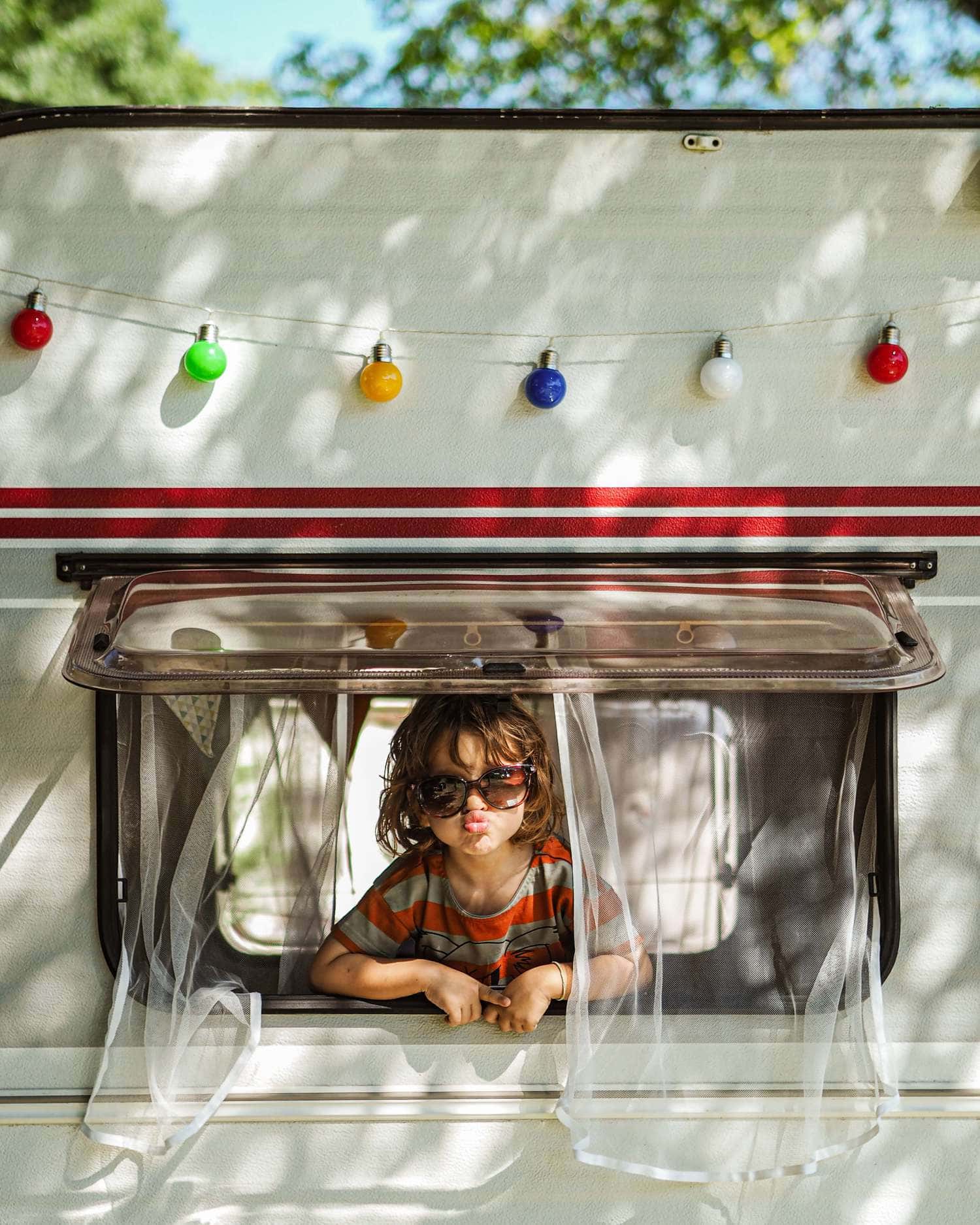
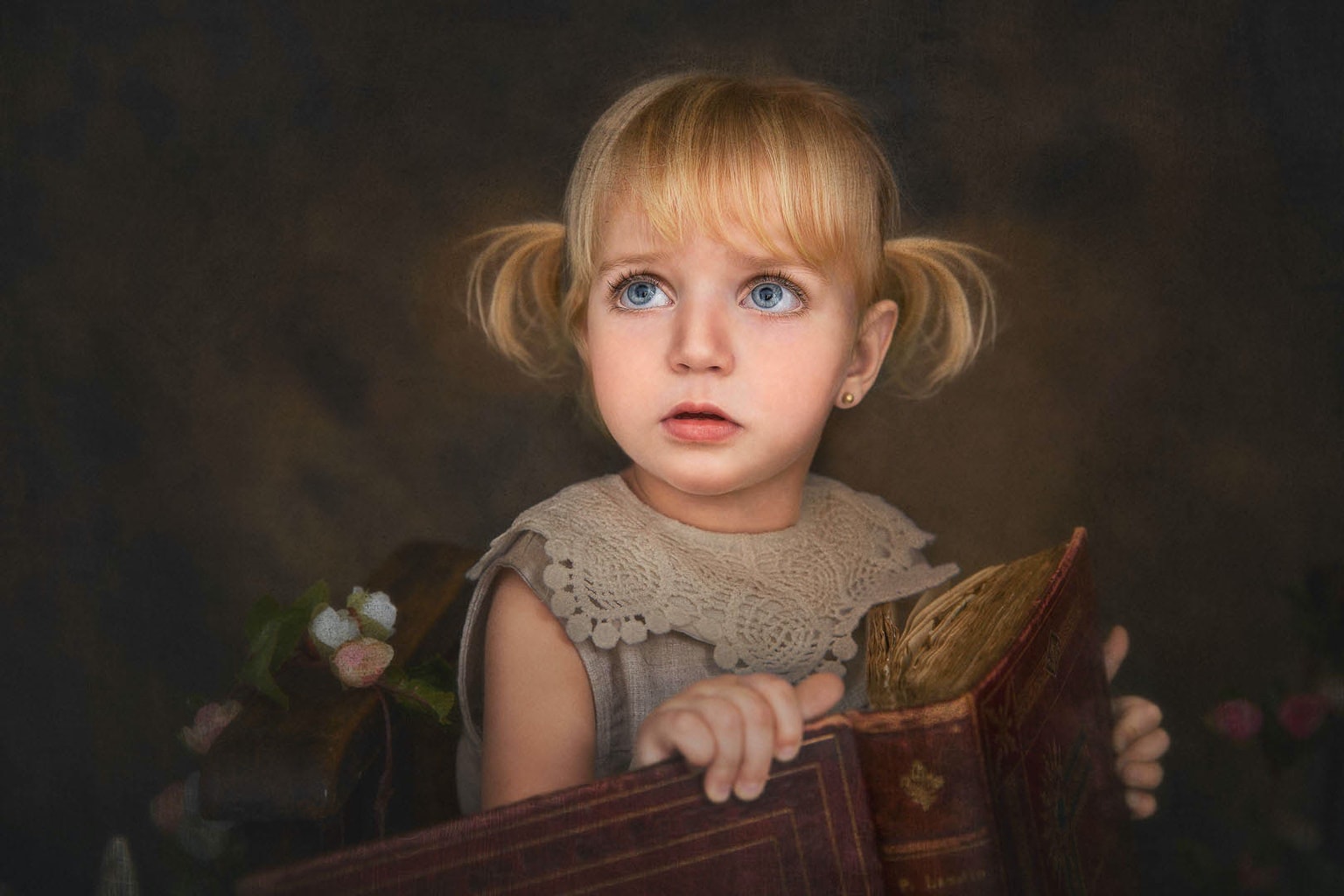
This does not imply that you cannot do documentary or spontaneous child photography and more elaborate or planned photography such as fine art , which we will see later, would be missing. What I mean is that it is recommended that you focus your efforts on one type of photography, especially if you want to dedicate yourself professionally.
In addition to improving with practice and learning to solve the difficulties that may arise in each type of style, if you are a professional, your clients will know what they can expect from your work and there will be no confusion. On the contrary, they will end up being your fans and there is nothing better than that. I guarantee you.
PHOTOGRAPHIC EQUIPMENT FOR CHILDREN'S PHOTOGRAPHY
If the only thing that matters to you about photography is taking pictures of your children, you have two options: take advantage of your current camera or, if you want and can invest money, buy a camera suitable for your needs.
Now, if you are going to take advantage of the camera because you like photography beyond immortalizing your children or grandchildren, or you want to dedicate yourself professionally, let's see which equipment is the most recommended for children's photos. Although I anticipate that the ideal is a good light equipment, that is to say: little and good. You should avoid many gadgets that make your model uncomfortable or intimidated.
CAMERA FOR CHILDREN'S PHOTOGRAPHY
It doesn't matter if you decide on an SLR , an EVIL or even a compact camera , I would recommend that it have the following features:
- Manual mode.
- Focus speed.
- Large sensor, minimum 1 inch.
- Burst shooting, minimum 3-4 fps (photos per second).
- Good performance at high ISO values.
OBJECTIVES FOR CHILDREN'S PHOTOGRAPHY
When I said before that little equipment was better and well, it is because it is better to carry, for example, a good objective, or two, than to carry a backpack full of objectives of different focal lengths. Personally, I recommend that they have these characteristics:
- That it is bright is really important, this is what will allow you to achieve those heart-stopping blurred backgrounds or photograph at high speeds in low light situations.
- The proper focal length for portraits is 50mm. I recommend, without a doubt, the king of lenses for portrait photography (if you don't have the budget, the 50mm f/1.8 is also a very interesting option ). Below 35mm it would not be suitable for portraits because it distorts, but if you want to include the context. An 85mm is also a great choice for portrait photography.
- If you want to photograph details (especially with the smallest ones), a macro lens is recommended.
- The stabilizer is advisable if the body does not have it, but more than anything if it is a telephoto lens or you are going to use somewhat slower speeds, if not, it is not essential.
- In the event that you are going to pay it off and have a good budget to invest, another versatile lens that I recommend is the 24-70mm f/2.8. A bright lens that will help you cover most situations.
Can you imagine running after a child and throwing yourself to the ground with a heavy backpack on your back? or say, "Ouch! wait a minute, I'm going to change the lens because with this one I can't capture all the scene I want, don't move, eh? Stay right there that gives you that beautiful light. No-fucking. That's why you have to come up with one or two lenses that work for you in most situations.
To delve more into portrait lenses, you have this other article.
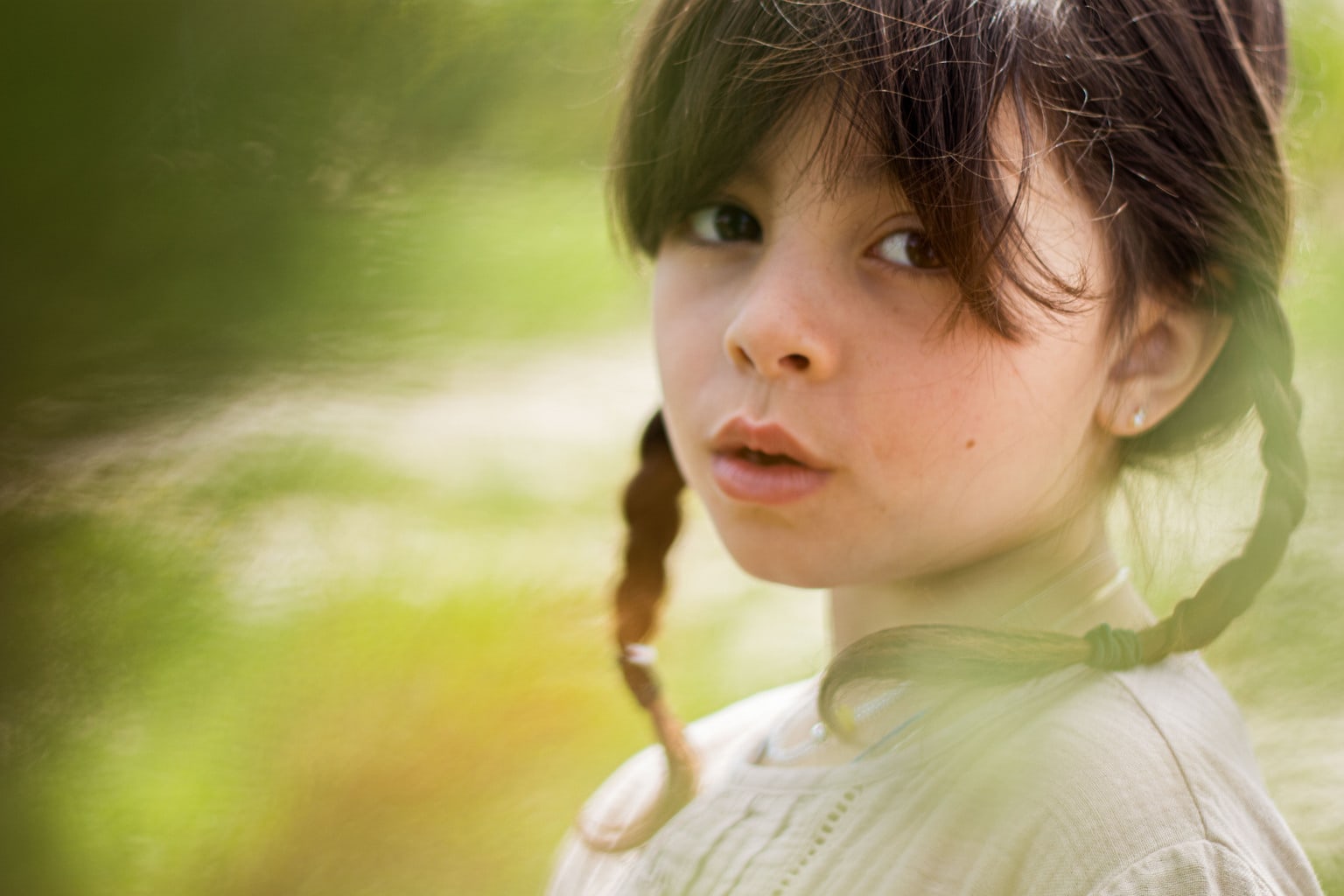
CHILDREN'S PHOTOGRAPHY ACCESSORIES
I insist, it is better to bring the minimum equipment. Many gadgets can make the child uncomfortable. If it's in the studio, it's different, you have more room to use a decorated stage, a light window, a reflector or any other lighting accessory.
However, outdoors or at home, where you seek naturalness, spontaneity and a relationship with the environment, you must make yourself as invisible as possible. Change the light window for a real one, the reflector for a white wall, the diffuser for a curtain, etc. Improvising will be much more effective than deploying your entire arsenal.
Fine art photographs are different , for example, later we will see what this type of photography is about, but I can tell you in advance that the costumes and props are a fundamental part that must be taken care of a lot.
ADJUSTMENTS IN CHILDREN'S PHOTOGRAPHY
Situations can be so diverse that it is difficult to give valid starting settings for all of them. However, I can give you some general recommendations regarding settings for children's photography:
- Try to have the settings preconfigured before taking action or you will miss many unique and unrepeatable moments. It's important to be quick, you can't stop fiddling with buttons and changing settings while the little one gives you a great moment, except for the most basic ones.
- Unless they are asleep, Manual Mode is not the most appropriate mode in these cases. Try the semi-manual modes instead (Aperture Priority if you want to determine the aperture, or Speed Priority if there is movement and you want to make sure it comes out sharp).
- Better high ISO and raise the shutter speed if necessary. Starting values to configure the ISO:
- ISO 100: Very sunny
- ISO 200: Some clouds
- ISO 400: Very cloudy or bright interiors
- ISO 800-1600: Dark interiors and dusk/dusk
- Starting shutter speeds:
- Sweep or panning: 1/30s
- Static children: 1/125s
- Children playing or moving: 1/250s
- Children running: 1/500s
- Children jumping or to freeze very fast moments: 1/1000s
- Recommended openings:
- Blurred backgrounds: f/1.4 – f/3.5
- Groups or several children: f/5.6-f/8
- Defined Background: f/8-f/22
- Continuous focus (AF-C or Al Servo) when there is movement.
- Evaluative or matrix measurement, especially at the beginning. When there are great contrasts in the scene, better punctual.
- Automatic white balance if you shoot RAW. In JPG, better check that the automatic is giving you good results and if it is not, adjust it to the appropriate mode for your circumstances.
- Activate the burst.
- Deactivates the integrated flash, except for specific moments such as filling in shadows.
- Shoot in RAW, you will be able to get much more out of the editing. Now, if you don't plan to edit your photos, for whatever reason, then they will look better in JPG.
- If you can, disassociate the focus from the shutter button.
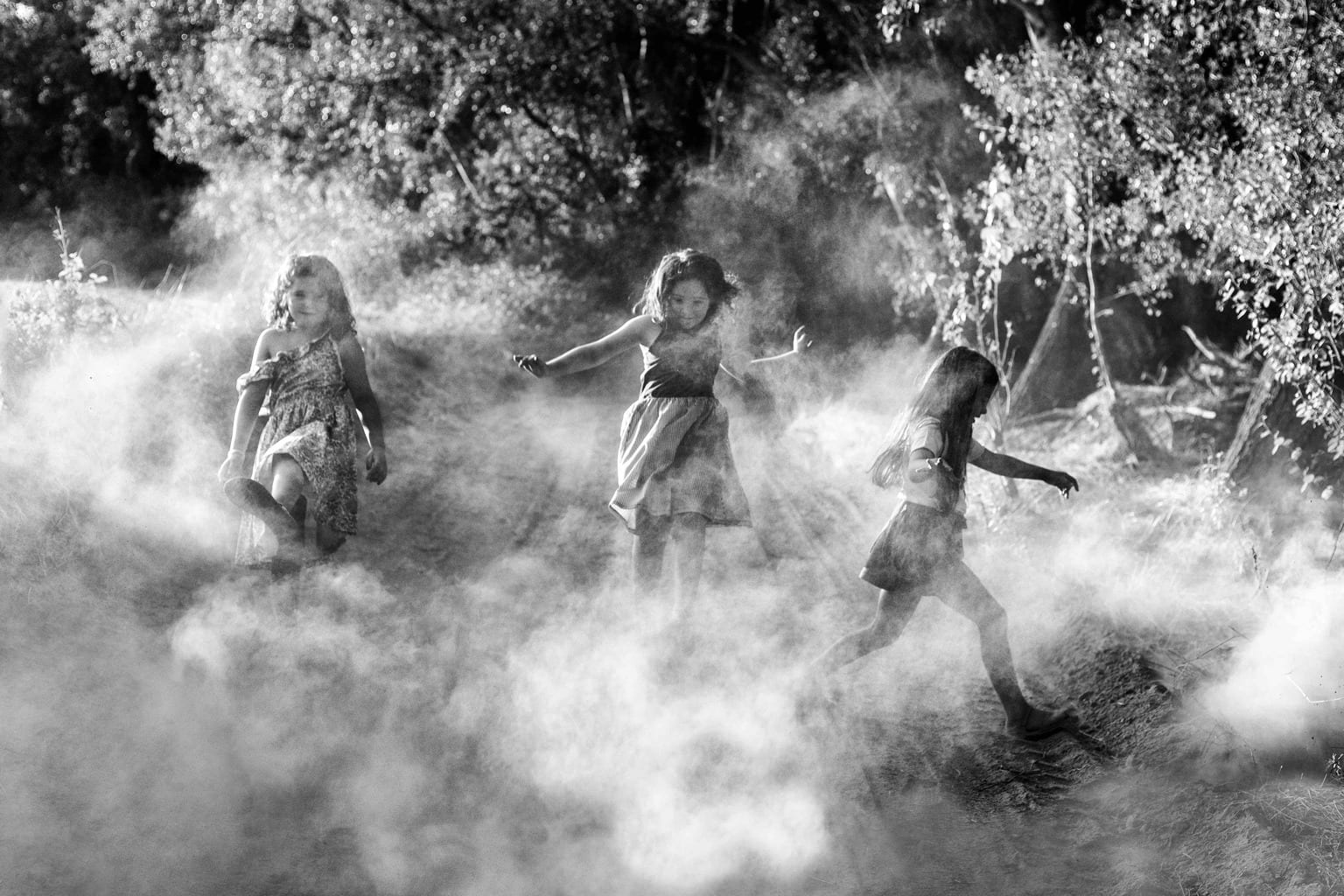
MEET THE CHILDREN
It is not about doing a master's degree in child psychology or anything like that, but as a father or mother, you will know at what moment they are, what their needs are, their limitations, their tastes, and what you can or cannot expect from your offspring.
Now, if you are or want to be a professional in children's photography, you must know your final client, who is the child. It is not the same to deal with a 3-year-old child as it is with a teenager, or an 8-year-old person. Each child stage has different characteristics and you can expect and ask for very different things.
Getting to know them will allow you to better interact with them and adapt the session to their age. Just like knowing their hobbies or their personality. You can always ask the parents first. However, at the beginning of your session, leave a little while to connect with him, which brings me to the next section, because it deserves a separate mention.
CONNECT WITH YOUR MODELS IN CHILDREN'S PHOTOGRAPHY
As I was saying, it is important, at the beginning of a session, to connect with your model. Especially in the case of children. Introduce yourself, let him know you, ask him a question (that is not compromised, not the typical one... how was school?, not one to answer with yes or no, or you'll start off badly ? ).
With the little ones, always crouch down at their height to talk to them, you can ask them about the toy they bring or show them one that you have brought, for example. Earn their trust first, it's much more important than pressing the fire button.
For the older ones, surprise them with a question that they don't expect. That they see that you treat them like someone their age, not like a small child.
And please, never treat a child like they are an idiot. He's just small, but not stupid, don't make weird little voices or talk halfway, even if he's 3 years old. Treat him with respect and you will earn his trust. Tell them an anecdote or show them a photo from time to time. That will help you maintain the connection.
Another piece of advice, from experience, is to avoid "no's." Always try to speak to them in a positive way, for example, "could you get better on this side?" , is much better than a "don't get on there" .
If you have to direct at some point, try to give clear and simple instructions, always, as I said before, avoiding "no" words, and if possible, especially with the little ones, use the game to direct them or achieve what you want them to do . Soon I will reveal some tricks.
STORIES AND EMOTION
Telling a story or conveying an emotion will be one of your objectives when photographing children. I eat? Here are a few tricks to add emotion and in this other article a few more tips to tell a story with a photograph.
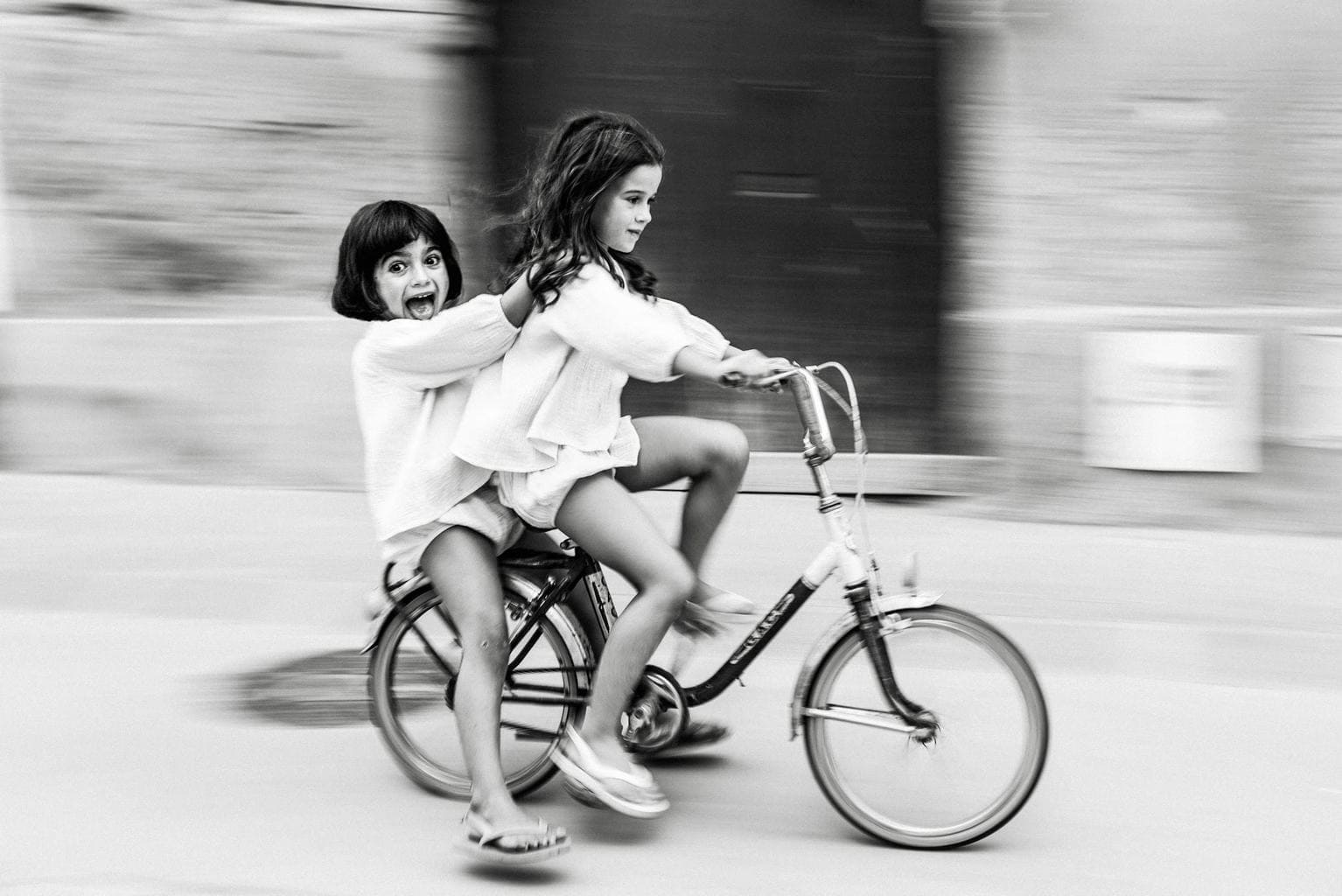
I know it's very tempting to say smile!, but please don't! Don't ask for a child to smile. To add excitement, better use these other resources. If you want him to smile, make him laugh, make him smile! But don't ask him because it won't be natural, because he will feel forced and because he won't convey the same thing. The best portraits are the most frank, the most authentic.
Photograph them how they are, how they appear at that moment and not how you would like them to be or behave. And unless you're doing editorial work with child models, forget about posing guides .
In short, it causes funny situations if you are looking for a smile, have funny anecdotes or some funny joke prepared (always appropriate to the age of the child, of course!).
PERFECTION VS. SPONTANEITY IN CHILDREN'S PHOTOGRAPHY
Leaving aside the photographs planned in detail, fine art type , with a careful aesthetic where you expect a perfect result from planning to editing, in children's photography, as I have already said, spontaneity prevails and that is above the perfection.
What do I mean by this?!
Well, for me, spontaneity in children's photos is invaluable and goes beyond technique. In other words, an authentic gesture in a photograph with a lot of noise is better than a technically impeccable photo that doesn't tell me anything.
For example, I see many photos of children in image banks that don't tell me anything, they leave me completely cold, they seem artificial to me. Very perfect in terms of exposure, focus, etc., but they look like pretend children on cardboard sets, with a flat look or a forced smile, without sparkle.
All this means that you do not obsess over perfect sharpness or a focus to the millimeter. Better grain or a small blur, than missing a gesture, a look or an unrepeatable moment. Immerse yourself in the action and look for the moment, the authenticity and the emotion over the technical perfection.
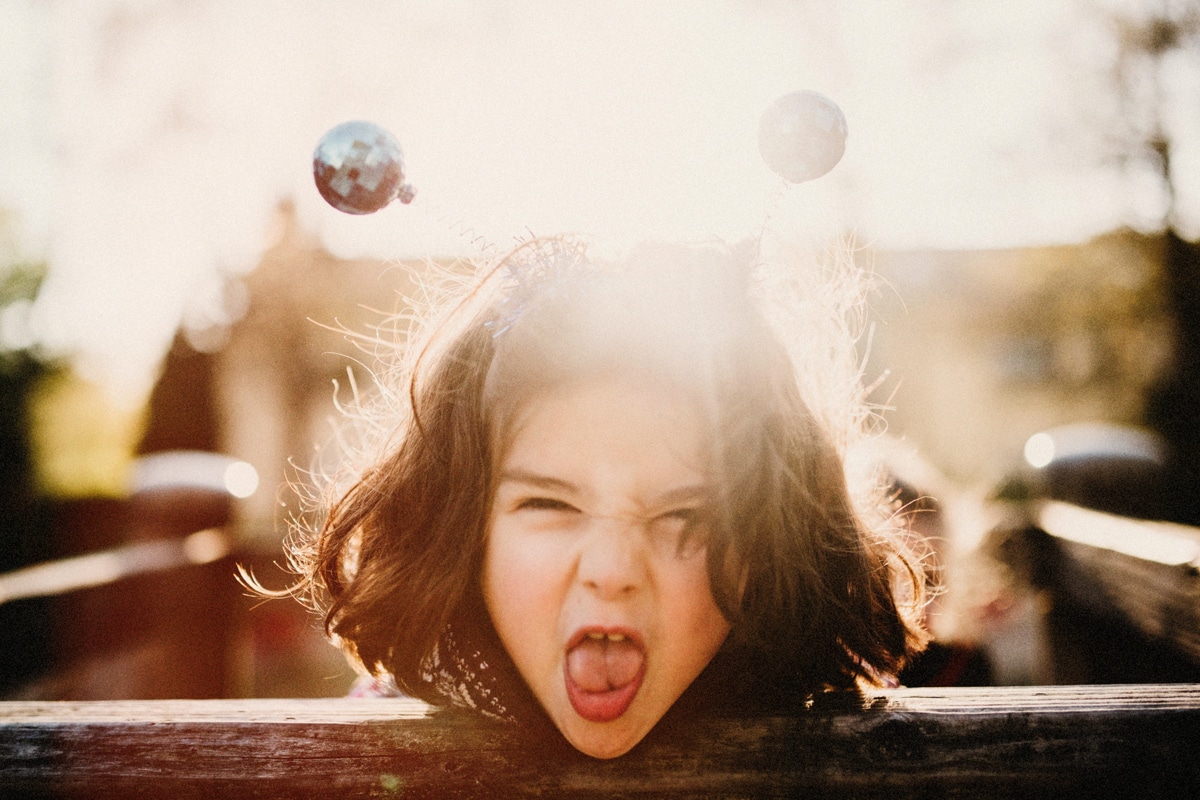
LOCATIONS
For a more artistic photography, the ideal is to prepare a set in the studio where you can also control the lighting much better. For the rest, look for locations where the child feels comfortable, which is a family environment. His house, a nearby park, the forest, the beach or a soccer field if this is his passion. It will be in those places where he will give you the best of himself, where he will be authentic and enjoy the moment so that you can achieve the best images.
In this article we have prepared some tips for you to find the best locations for each shoot , but don't forget to choose settings that reflect your tastes and personality whenever possible.
By the way, if you are thinking of taking a trip in which you can take spectacular photos of your children, here is a selection of photographic destinations to travel with children with the most spectacular locations.
LIGHTING IN CHILDREN'S PHOTOGRAPHY
Soft lighting is generally more suitable for children's photography. In this article we tell you how to get it. However, certain situations can also greatly benefit from a harsher light: photographing an angry child, adding character to the scene, playing with shadows and lights, etc. Hard light will help you achieve more dramatic portraits.
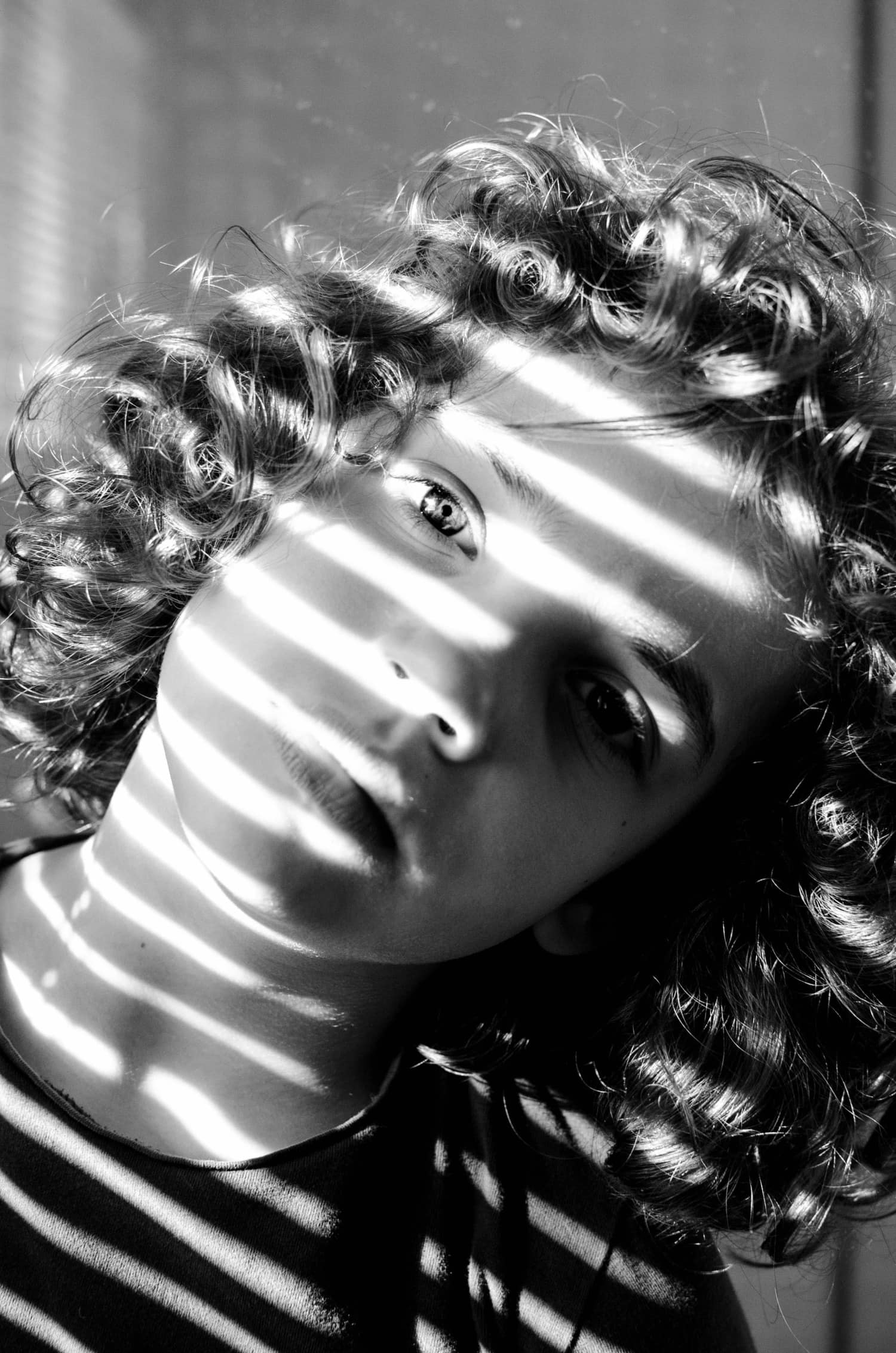
To go deeper into portrait lighting, we have this guide in which we explain everything. Keep in mind, that once you master the lighting you have pretty much all the work done. With it you can print the tone you want on your images, enhance one message or another, highlight one area or another, provide more or less warmth, etc.
USING THE FLASH
As much as I like natural lighting more in children's photography because it is obviously more natural and authentic, I have to admit that flash is often necessary and also offers great creative opportunities. Therefore, it must also be taken into account.
But we are talking about children, some of them very young, and the flash can make them uncomfortable. So my recommendations when using it with them are:
- Never use it directly, better bounce it, use a diffuser or an umbrella if you are in the studio.
- If you can use a window of continuous light because you're in the studio, it's better than flash.
- Use it to fill in shadows.
- Whenever possible use an external flash.
- Move it away from the camera for creative effects, such as behind the child, to separate from the background or create backlighting.
- If it's the built-in flash, use a white tissue paper or white plastic bag to diffuse its light.
COMPOSITION IN CHILDREN'S PHOTOGRAPHY
I am aware that sometimes there is no time for anything, but a good composition is a large percentage in the success of a photograph. Some tips to achieve an interesting composition in photos of children:
- Place your eyes on one of the points of interest in the rule of thirds.
- Avoid placing the child in the center, unless it is with an intention, you know that the rules are to be broken once you master them.
- Make sure that there is always a clear center of interest, in the portrait it is the eyes, so make sure that they are well focused.
- If there are several silhouettes, do not overlap.
- Try that nothing steals the child's attention, unless it is an element that is part of the story.
- Shoot it at eye level, but don't forget to play with perspective to add emotion or reinforce a story. Remember that if you photograph it from above it will appear smaller or weaker, from below it will acquire a greater magnitude.
- Use natural frames to focus attention on the child.
- Try unusual angles that surprise.
- Find the balance with the rest of the elements.
- Try adding part of the scene to add context.
- Use the lines to direct the gaze, create tension, etc.
- Leave room for the imagination, leaving some part hidden.
- Make use of blur both for backgrounds and for more creative photos.
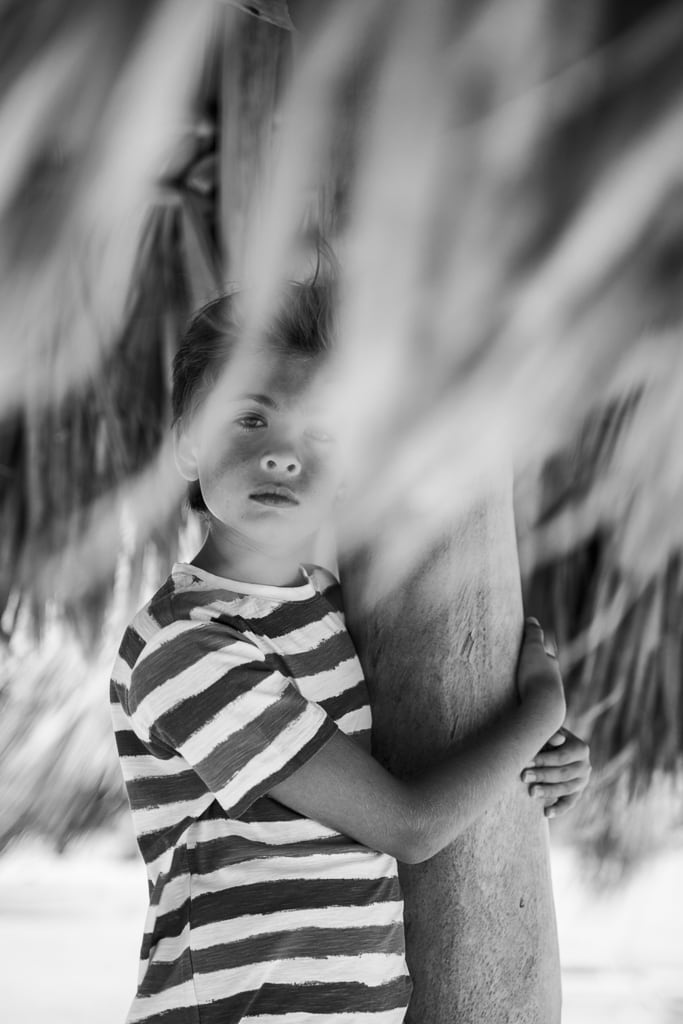
COLOR IN CHILDREN'S PHOTOGRAPHY
Color is a very useful composition tool when you know how to handle it, and it also helps to convey certain emotions. You can help him to achieve more contrasted, happy, nostalgic photos, etc.
In this article we tell you everything you need to use color in your photographs depending on what you want to convey.
BLACK AND WHITE CHILDREN'S PHOTOGRAPHY
If you want to focus on the story, get timeless photos and color is not the protagonist in the scene, do not hesitate, black and white photography; here is everything you need to know.
Actually, the premise is to photograph in color but thinking in black and white. Later, in the processing, it will be when you convert the image to grayscale, in Photoshop or Lightroom , for example.
PLANNING A CHILDREN'S PHOTOGRAPHY SESSION
Beyond day-to-day documentary photos, success in a portrait session lies in good preparation, here you can find out how to do it. But do not forget to take into account the age of the little person you are going to portray.
HOURS FOR CHILDREN'S PHOTOGRAPHY
Taking light into account is important, especially in outdoor photography, however there are other aspects that you should consider both when preparing the session and during it.
Sunsets are wonderful, but try to choose a time when the child is not tired, hungry, or sleepy, or the session will be a failure no matter how much golden light you have. After a nap and with a full stomach, he is sure to be more receptive and eager to play for you. The shorter the age, the more acute this problem becomes.
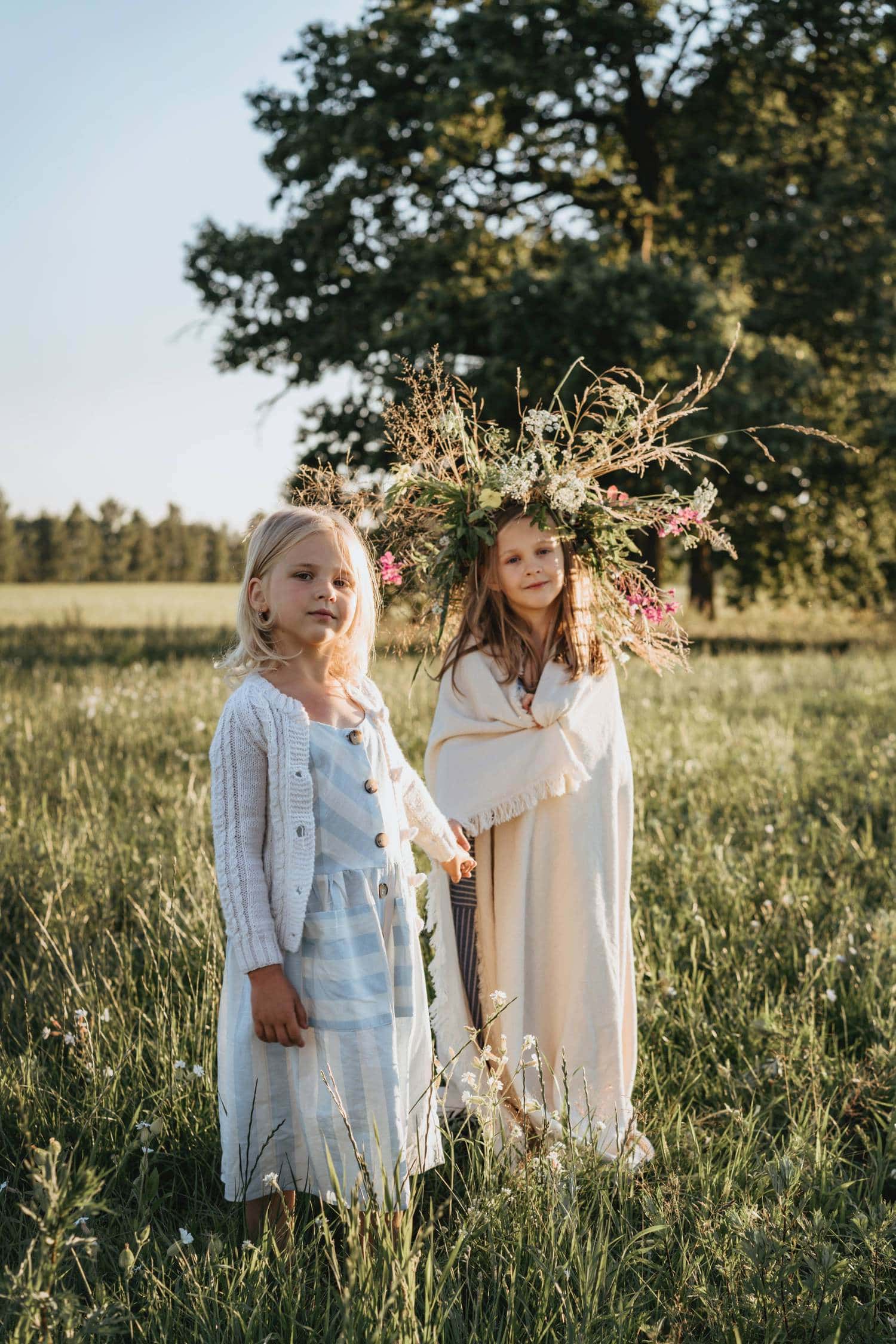
It is also not convenient to extend the sessions for a long time, since the only thing you will get is to bore him. At least, the effective time of photos (not counting the approach, if there is any change of clothes, rest, etc.), should be as short as possible, between 30-60 minutes and depending on age. The smaller they are, the sooner they get tired, of course.
oh! And pay attention to the signs, at the first sign of fatigue, it is better to stop, even if only 20 minutes have passed.
TRICKS AND ADVICE ON CHILDREN'S PHOTOGRAPHY
With these tricks for children's photography, before, during and after the session, you will be sure to be right. However, I want to highlight the most important ones here and add others:
- Always remain alert, at any moment they can give you their best expression or a magical moment, and this is unrepeatable. If you don't get it there you won't get another chance.
- For the same reason, you have to be quick to act. Knowing your camera well and the semi-manual modes will help you. Have the settings ready too.
- If you want a specific photo in a specific place, prepare all the settings first, and then ask it to be placed where you want, if it gives you 3-4 seconds, say thanks. With your homework done, you should give yourself time.
- It is very tempting to look through the viewfinder. I admit it, although you also have to be flexible and when it comes to children, a very effective trick is to move the camera away from the body to shoot, so that it does not interfere between glances and the connection is not lost.
- It includes dynamism with techniques such as sweeping or panning , or freezing, with very high speeds , splashing or fast movements such as jumping.
- Avoid these mistakes at children's birthdays and save parties. Here are some tips for photographing on Halloween, for example.
- Before launching professionally, practice a lot with the children of relatives and friends. In this way you can learn from the different situations that may arise and how to solve them. Nothing better than the experience itself.
- Whenever you can get a helper, to ensure safety, to help you with the game and even give you a hand with the equipment and accessories you carry.
- Avoid the snapping of fingers above your head and the consequent glances of children in limbo. That they look at you, at someone who accompanies them in the scene or that they continue concentrating on their game.
- Do not be afraid of editing, it is not necessary to do a complex or complicated retouching, but to finish your photograph and leave it just as you imagined it when you did it, the moment to put your personal stamp. Make sure that the edition is in line with the tone of the photograph, with the scene and the message. Adjust shadows and lights and take care of details, such as skin tones. If you start from scratch, here are some basic adjustments to edit your photos and I'll also leave you with this other article where we tell you how to do basic development with Camera Raw.
If you have been left wanting more, in this article you have up to 100 express tips for photographing children.
HOW TO PHOTOGRAPH CHILDREN IN MOTION AND FOCUSED?
The million dollar question! Photographing children in motion that come out focused? Come in here please. You're welcome ?
HOW TO PHOTOGRAPH PORTRAITS OF CHILDREN?
To go deeper into portrait photography, we have a mega guide prepared for you with everything you need to know to immerse yourself in portraiture. Remember to take into account the age of the child to relate to him, for this all the advice that I am sharing with you today will help you.
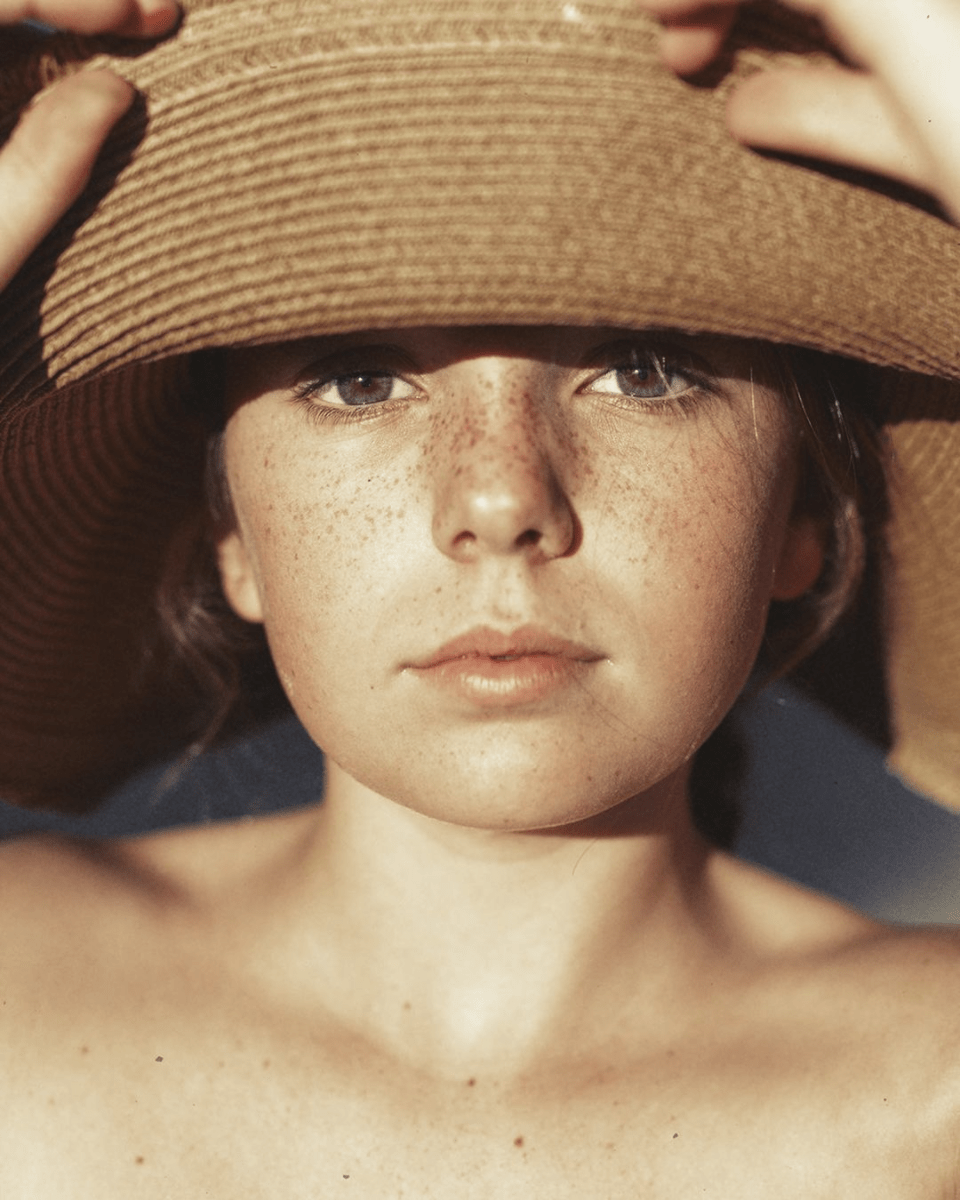
HOW TO PHOTOGRAPH CHILDREN IN STUDIO?
A study is a new environment for a child, so they are likely to be more reluctant. That is why it is important that you first spend some time connecting with him and when he is more relaxed, start taking photos.
It is also important that you have prepared, in addition to the decoration if it were the case, the lighting and the settings, you must be very fast so as not to delay and bore him. If you have to test the lighting schemes with a volunteer beforehand, do so. But not in session.
Try to make the environment pleasant in terms of temperature, noise, lighting, etc. And if they are not very young children, the ideal is for parents to stay at a distance from which they can observe but not interfere. If they're older and don't care, just going for a coffee is the best for everyone ? . You will have previously agreed on what type of photos you are going to take, how many and other details, their presence does not have to be necessary ? and the older ones will surely be more relaxed without them directing them. Everything will depend on the child, the parents and the situation.
TIPS FOR CANDID AND CANDID PHOTOS
The best thing when it comes to children is NOT TO INTERVENE.
Yes, yes, you read correctly. The most natural thing is what happens without you telling the child what to do. I have been giving you clues, but for a child to appear natural it is best that they do not know that they are posing so do not ask them to be like that or to look at you "asao", just play with them, propose an activity, give them something to interact with and take advantage of the moments that it gives you.
However, in this article you will find a series of tips to achieve natural and spontaneous photos .
OUTDOOR PHOTOGRAPHY OF CHILDREN
The exteriors offer infinite opportunities for photography, by decoration, by space, by lighting and a long etcetera. For this reason, there are many people who choose to carry out photo sessions for children outdoors. Something that I personally recommend, as you will have been able to see.
Now, for your next outdoor portrait session to be a success, you must take into account some aspects that we have summarized in this article .
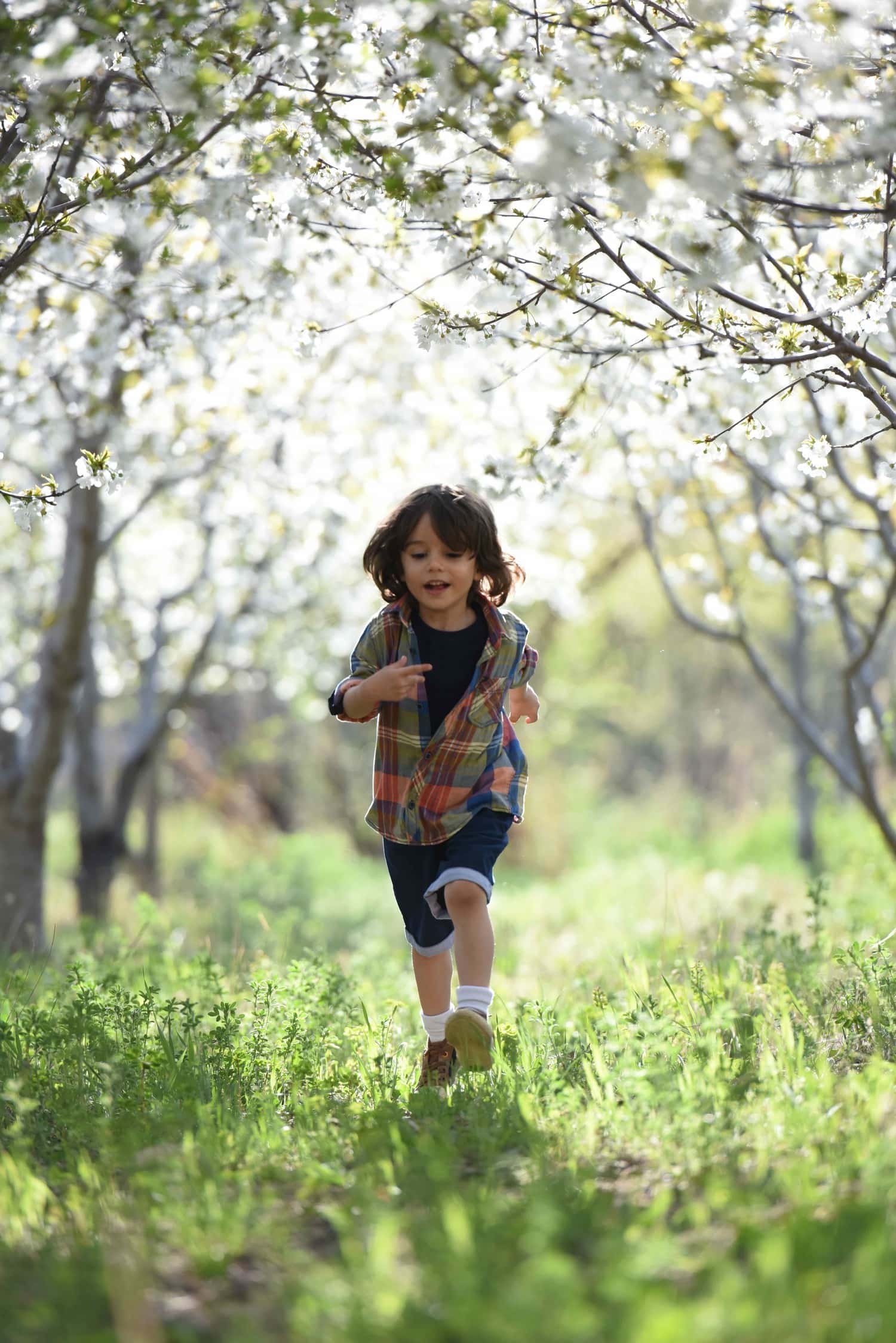
TAKING PHOTOS OF CHILDREN AT HOME
Whether you are a professional who travels to your home, whether you are the father or mother of the child (or any other relative), photos at home are a treasure on a documentary level. As the years go by, those photos acquire greater value, because they are a testimony of his childhood, of his games, of his day to day. And no studio or location setting can beat it.
When we are parents, the house becomes such a routine place that it seems bland to us. If you come from abroad you will see it with another point of view, or with other eyes, because everything will be new. But if it's your house, try to see it with a different look, discover new points of view, explore every corner and reconcile with it, because for you it's what you see every day, but your child will love to see his stuffed animal tomorrow on the bed, his favorite toy scattered on the floor, the cup with which he had his cereal for breakfast every day or seeing himself painting his first works of art. Believe me, nothing has more value than all this.
Some tips for taking photos of children indoors are:
- Study the light well: where is there more light and at what time. Take advantage of the places where you think you have better lighting to suggest that they play or do an activity.
- Don't be afraid of chaos if it adds to the story.
- Eliminate background elements that distract instead of contributing.
- Be careful with artificial lights, sometimes it is better to turn them off so that they do not leave unwanted tones or unpleasant shadows on the face, like ceiling lights.
- Yes, you can use lights in a directed way, for example, the light from a tablet to illuminate a face while the rest remains dark, or a lamp to illuminate a story that is being read, etc.
- Play hide and seek to achieve original images.
- Forget technique and perfection and look for unrepeatable moments.
- Document an entire day in the life of your child.
- Photograph the routines, what today seems boring to you, tomorrow will be an indelible memory. Learn to discover the magic of the everyday.
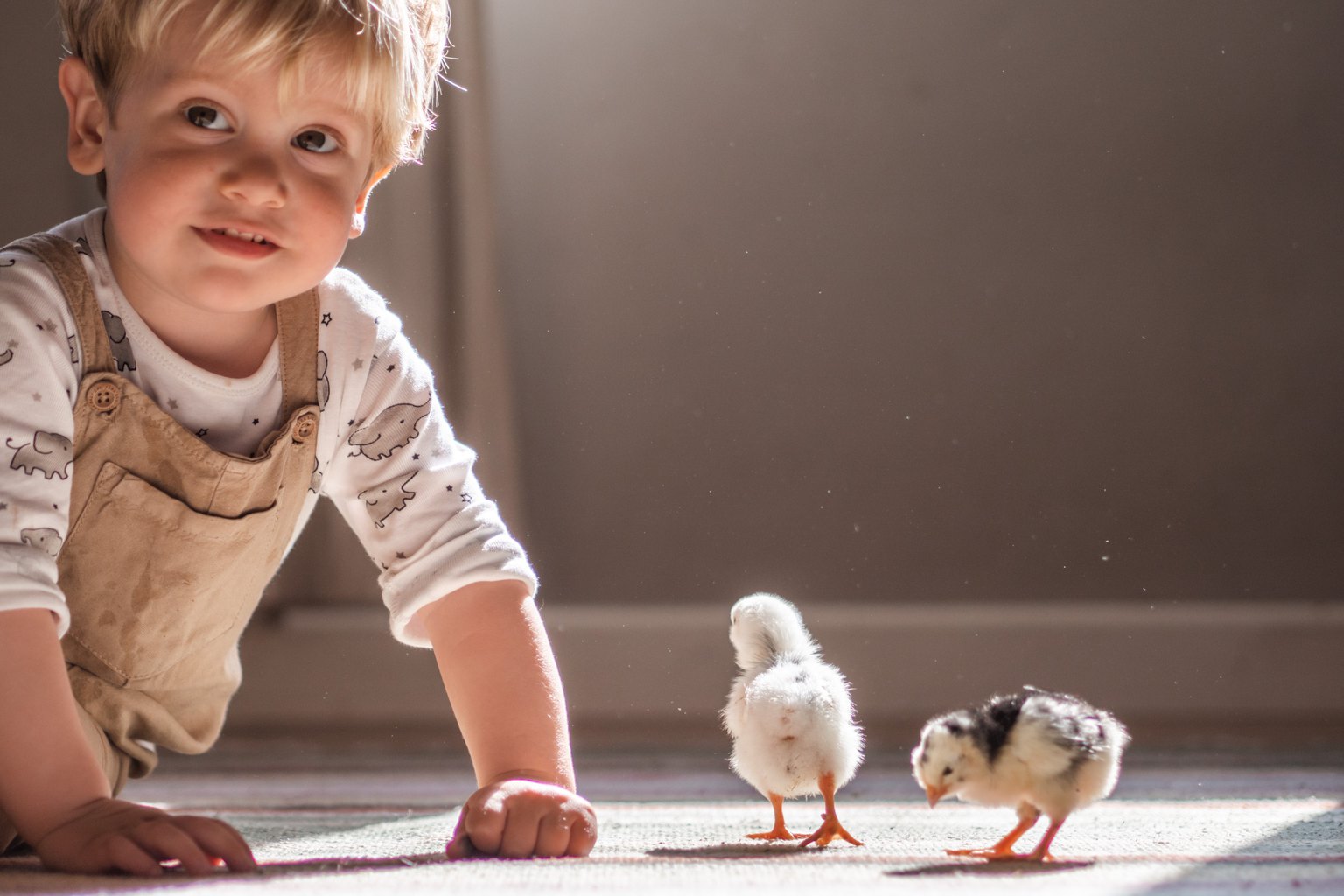
If you want them to look like they were taken in the studio, for whatever reason, here are other ideas:
- Use a white background.
- Put a black background if you want low key photos.
- Diffuse the light from the window with a white curtain if it enters directly.
- If you use flash, bounce it.
CHILDREN'S FINE ART
Now let's talk about that type of photography that I have mentioned several times in which everything is planned in detail.
WHAT IS FINE ART IN CHILDREN'S PHOTOGRAPHY?
The term fine art means fine artand it can also be translated as artistic photography, although artistic photography is a broader subject. In this case, it is all photography that aims to become a work of art using lighting, scenery, costumes and even post-processing. The end result is more like a painting than a standard photograph .
The final photograph has a purpose from the beginning, to tell a story or convey an emotion with an impeccable result. They are works designed to decorate or admire and where the artist's gaze usually has more weight than the moment or the subject itself. The result can be completely different from the original scene to suit what the artist has in mind.
It would be the polar opposite of documentary photography. I leave you an example image and with this board on Pinterestthat we have created from the team so that you get a more complete idea and by the way, if you like this style, that you find inspiration.
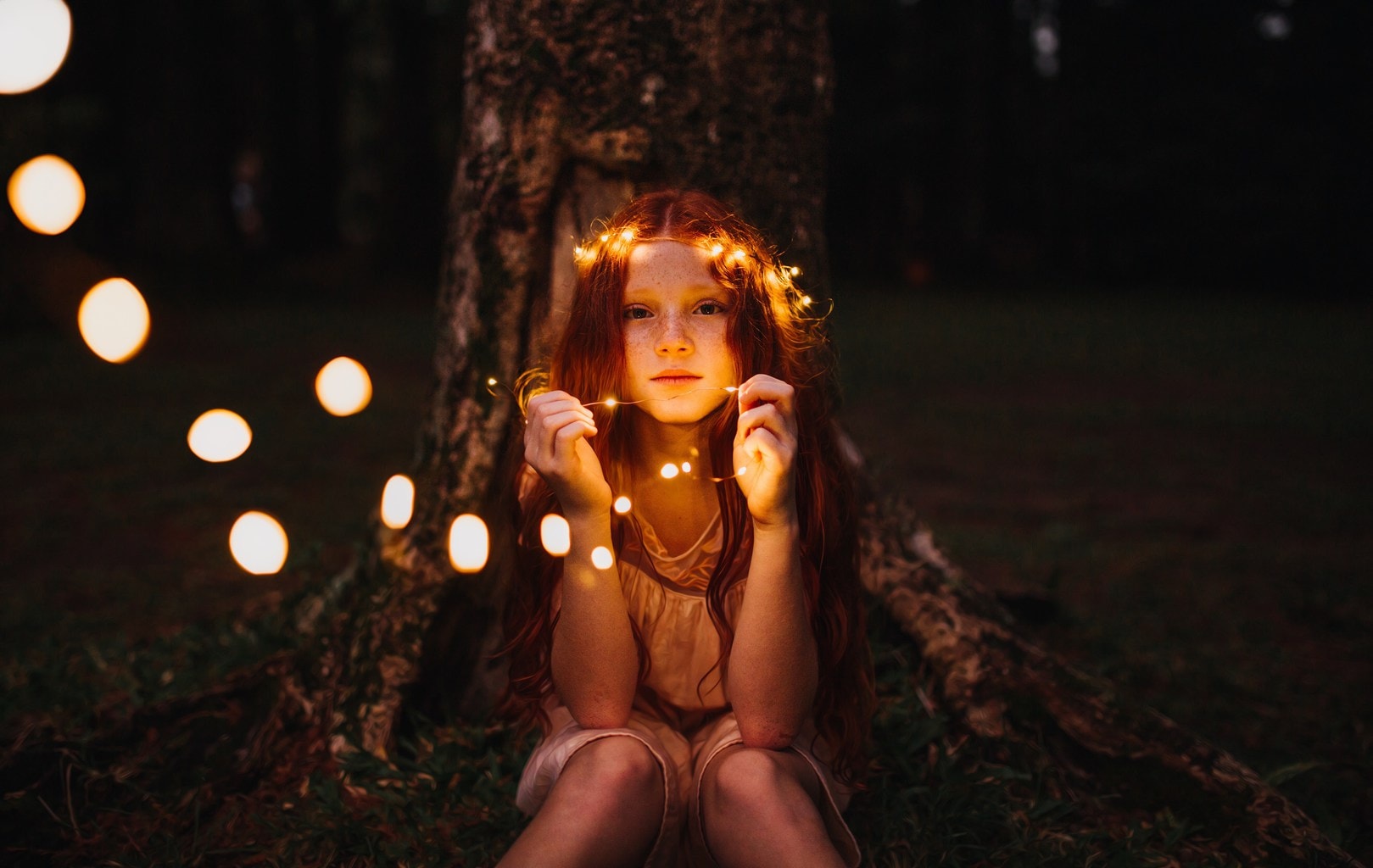
This type of photography can be done both in the studio and outdoors. Even great results can be achieved by creating a montage with a background on one side and the subject on the other. When it comes to art and creativity, you know… there are no limits!
CHILDREN'S PHOTO EDITING FINE ART
As you have been able to see or intuit, in this case, editing or retouching becomes more important than in documentary photography. In this video you can see an express example of how to convert a photograph into a fine art image . It is a quick and simple example to give you an idea, if you want to go deeper and control Photoshop, you will find a lot of tutorials on the net.
COSTUMES AND PROPS IN CHILDREN'S PHOTOGRAPHY
Once again I have to insist that photographing children in their natural domestic environment is not the same as preparing a session. Nor is a normal photo session the same as a fine art session . The costumes and the setting will not be the same, which is why planning is important based on the type of session or photos in question. However, I leave you with some general advice:
- Whenever you can, choose the colors well depending on the type of photography you want to do: if you are looking for photos with contrast or harmonics; if you intend to create fun, happy and energetic photos; or if, on the contrary, you prefer to arouse nostalgia, sweetness, tenderness, etc. The colors of the clothes should be in keeping with the environment and with the tone of the photograph.
- Avoid patterns or letters that distract or capture the gaze, stealing prominence from the child.
- In photo sessions where you look for naturalness and spontaneity, make sure that the clothes they wear are comfortable and allow them to play.
- For fine art sessions you have to look for delicate, beautiful, timeless clothes that express exactly what you want to tell. In these cases, the costumes are a very important part of the photography.
- The props are also very important, can you imagine a Dora the Explorer stuffed animal in a fine art photo . Sounds like a parody right? Laughter and jokes aside, everything you include, toys, decorations, accessories, etc. They must be in keeping with the costumes, the setting, the story, the emotion you want to evoke, etc. And not only in fine art photography . Nor would I stick an old doll in a photo with a bright yellow and your little one jumping and laughing like there was no tomorrow.
- When conducting sessions professionally, tell parents what type of clothing to avoid and what is advisable.
THE GAME: THE KEY TO SUCCESS IN CHILDREN'S PHOTOGRAPHY
Although I have been advancing it, the game is the key factor in directing a photo session with children, whether they are yours or clients. Through this you can direct them without them noticing; get them to move where or how you want; or take advantage of the moments in which they laugh, are concentrated or show all their personality.
Set them challenges based on their age, "will you be able to get on that bench without help?" ; Become one character and the child another so that you can relate through symbolic play, play dolls, etc. But above all, have fun, recover the child you were. The session will be more relaxed and the child will connect better with you.
You can always bring confetti, balloons, water pumps, a hat, a magnifying glass, a toy camera, or any element you can think of to energize a session or add some fun.
KIDS PHOTOGRAPHY IDEAS
Sometimes creativity resists us, that's why we have put together a lot of creative suggestions for photographing children, so you don't lack original and fun ideas.
HOW TO GET BETTER PHOTOS OF CHILDREN WITH YOUR MOBILE
It is the camera that we always carry with us, so with our children, on many occasions, it becomes the main camera, with which we capture the most moments.
Instead of denying it, it is better to take advantage of its potential, which is its availability and ease. To do this, I leave you with these tips:
- Use the main camera of your mobile, it is the one that will give you the best results.
- Clean the lens.
- Do not zoom, unless it is with your feet.
- Always look for situations or places with light, this is the weak point of smartphones.
- If the light is very low and there is no possibility of getting closer to a light source such as a window or a lamp, make use of the night mode if it has it.
- If you have portrait mode, use it! At least investigate when it works best for you and when it is better not to activate it.
- Shoot in RAW if your smartphone has the possibility.
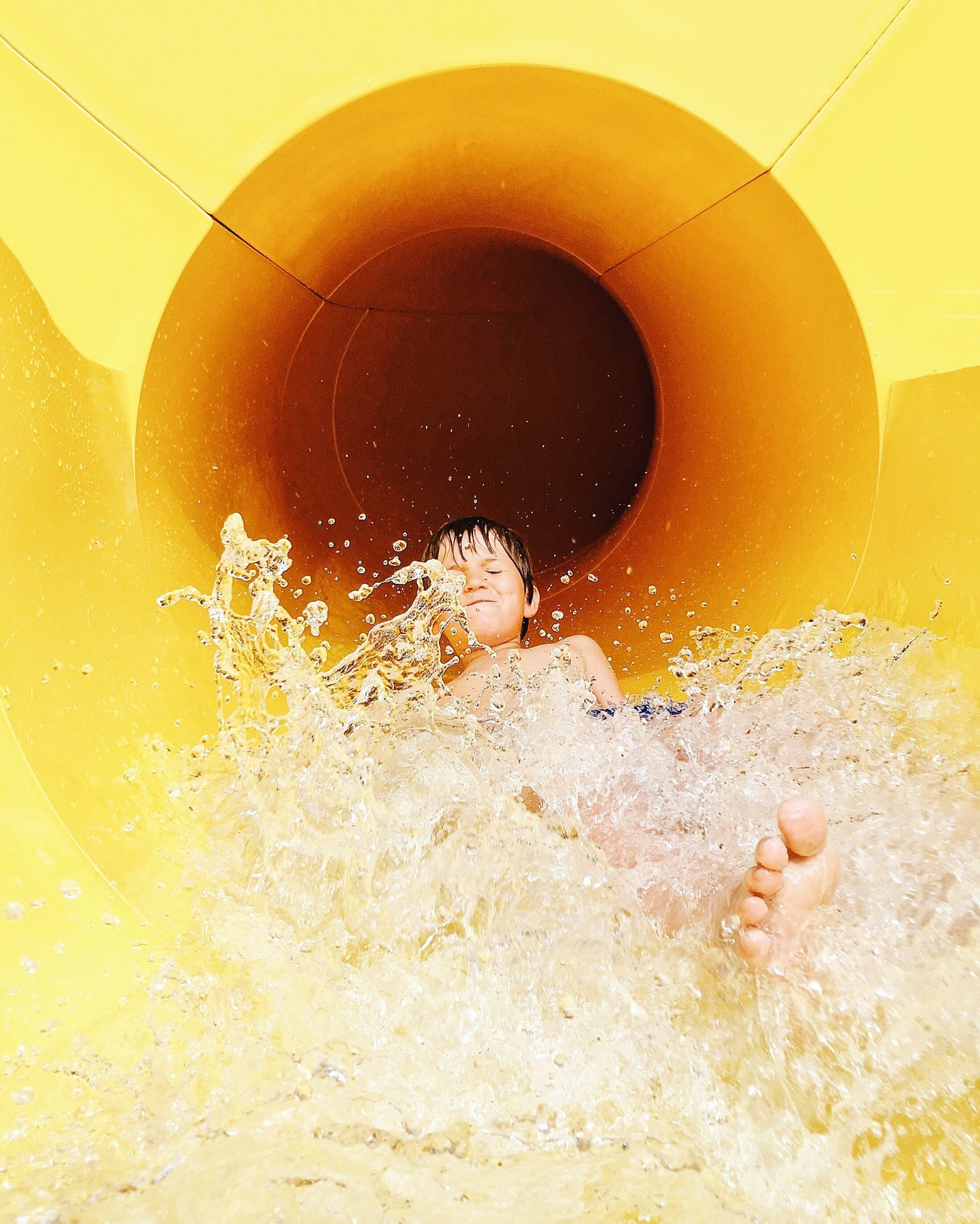
If you use your mobile phone a lot when it comes to photographing your little ones, be sure to read our comprehensive guide with all the tips and tricks for photographing with your mobile phone .
PHOTOGRAPHY OF CHILDREN WITH FAMILY
Children are part of a much larger gear, which is their family. Photographing them with the rest of the members is telling stories, adding emotion, documenting the moment, and keeping memories for a lifetime.
Also, photographing the magical relationship that exists between brothers is priceless. If you want to know how to carry out a family photography session, we will tell you everything within the link. If what you are looking for are ideas to invigorate a family session, do not miss this other article.
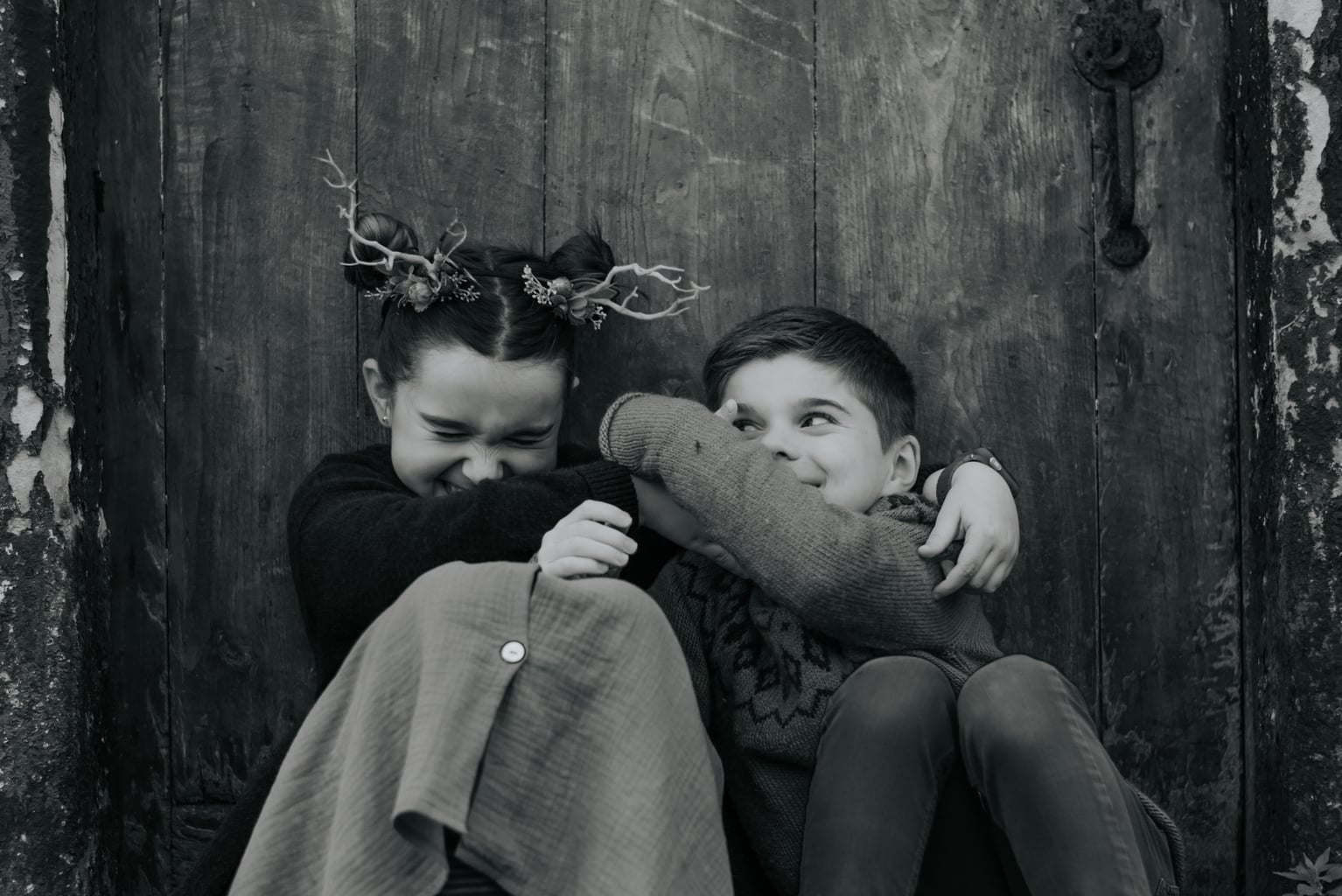
To end this section, I can't think of anything more appropriate than a dose of inspiration with this gallery of family photos. If I'm not mistaken, you are going to have a terrible desire to go photograph yours. Still not enough? So you need another shot, here's a double dose:
- 25 photos to inspire your next family photography session
- Our photoreto dedicated to family photography
PATIENCE
I think this is the star tip. Patience. With children it is like that. Breathe as many times as necessary, put yourself in their place, for them taking photos is of minimal importance, they want to play. And if on top of that you are an unknown person with a black thing in front of your face, then you are unappetizing. I'm sorry to be so clear, but it's reality!
Try to adapt to them instead of them adapting to you and take advantage of all the moments they give you.
Breathe, yes, again, and as many as necessary without losing your smile.
SECURITY AND LEGAL AND ETHICAL ASPECTS
We are entering tricky terrain. Photographing children requires consent. Posting or marketing photographs of children requires written consent. Make sure of this, always.
In the case of being a professional who carries out photo shoots for children, if you want to use them to post them on your website for promotional purposes, you will have to have the consent of the parents in writing. I recommend that you have a model contract ready to fill out and sign at the time of the photo session . Obviously, whether they sign it or not is voluntary.
On the other hand, apart from the professional part, if you take photos of children on the street who are not your children or those of your friends, you should ask permission. Maybe the legal part changes from one country to another, but the ethics don't. Children are vulnerable and it is our responsibility to protect them. If they are not photos that you are going to publish or sell, a written signature is not necessary.
But not all are legal aspects. Security is a topic that I want to talk about now that so much is published on social networks or that photos are shared in different ways. You should know that your mobile has a hidden risk, I will tell you about it in the following video, ok, now you are not interested in the review of this mobile, but in that hidden risk of your mobile, you can go directly to minute 14:38 (but you will Notice that if you like mobile photography, the rest of the video will interest you ? ):
In addition to being careful with what I just told you, keep these recommendations in mind when sharing or posting photos of your children or family members on social networks:<

